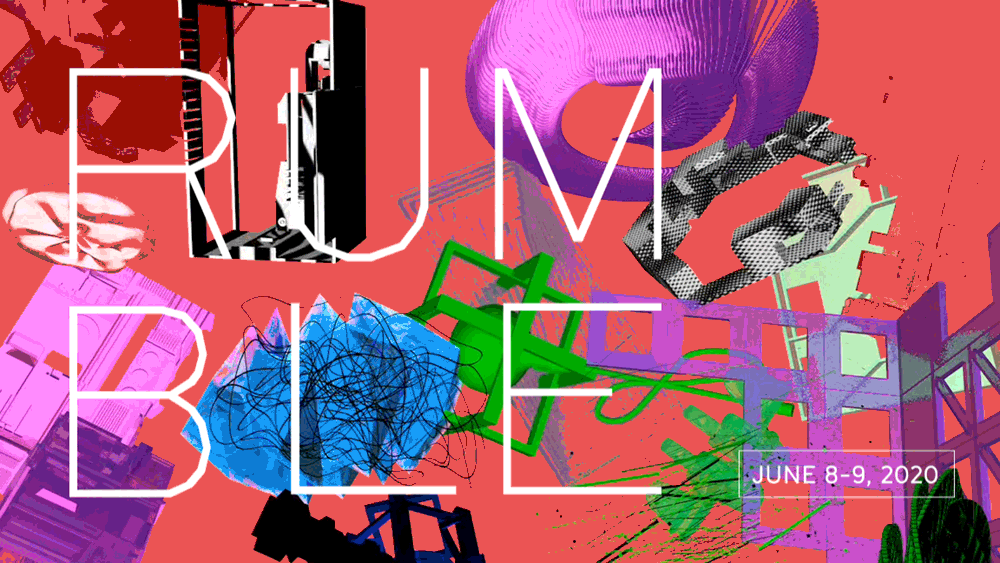
Welcome to [virtual] RUMBLE 2020
RUMBLE is UCLA Architecture and Urban Design’s end-of-year exhibition. It is an opportunity to showcase how the architectural and urban ideas that motivate us have matured and developed under the direction of our talented students and the collective stewardship of faculty.
This year, through our first virtual event we were excited to engage a truly global group of critics and guests in conversations about the future of the built environment as forecasted by UCLA Architecture and Urban Design.
Featured Studios
Below is a snapshot of student work from RUMBLE 2020. Visit our Student Work archive to learn more.
Research Studio with Hitoshi Abe
M.Arch.I, Third Year
With the evolution in work-lifestyle and the rapid development of mobile technology, specific activities have been released from the building forms that once separated and regulated them. Studio focus is on co-working and co-living as catalytic programs, capable of promoting new programmatic relationships and suggesting new building types.
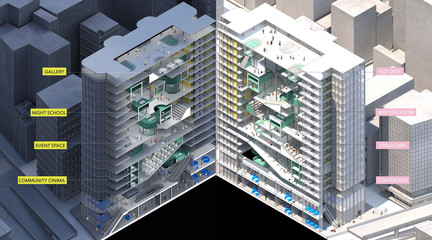
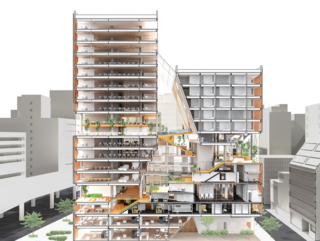
- Ada Luchao Wang
- Ziyin Lin
Research Studio with Neil Denari
M.Arch.I, Third Year
What brings urban density, geometry, nature, and construction together? Mass Timber. Cultivated forests in the landscape that, through transformational processes, turn into forests of another kind, that of the urban sort, is a provocative concept that we will thorough investigate through speculative massing and detailed design.
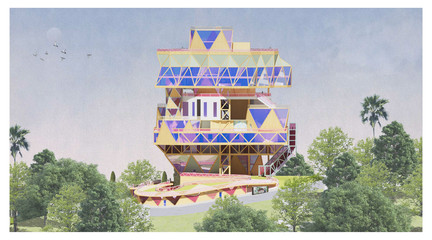
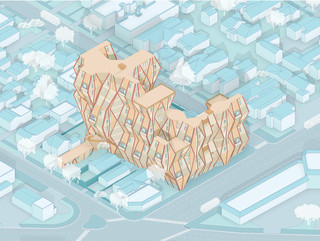

- Yushan Men
- Cate Carlson, Rayne Laborde
- Cate Carlson, Rayne Laborde
Research Studio with Yara Feghali
M.Arch.I, Third Year
Today, there is an urgency to address our cities’ cultural messiness. This research studio explores Los Angeles’ lush diversity by uncovering its multiple layers of resolution. We speculate – through interactive storytelling – on the near future of cultural space working with machine aesthetics, photogrammetry, and cinematographic techniques.
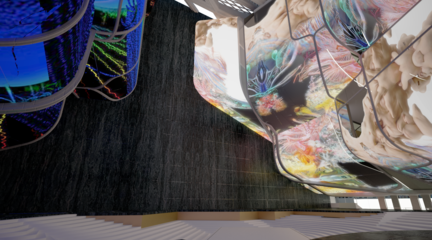
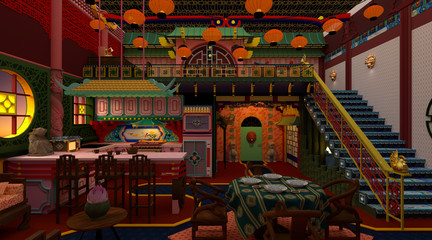
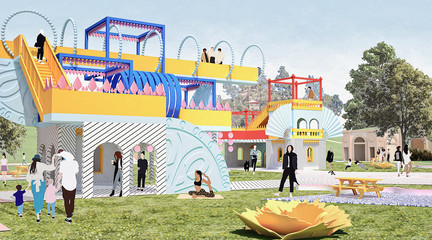
- Hideyo Kameda
- Chieh-Ting Chuang
- Sam Crawford
Research Studio with Heather Roberge
M.Arch.I, Third Year
Where the material goes, the force flows. This concise phrase links material, geometry and force in relationships that are operative. Without this triad, we would lack a broad and captivating history of architecture. It is precisely material coursing with force that has configured centuries of social interaction, political debate, religious liturgy and indeed, a central disciplinary vector of architecture. The studio will be deeply invested in how structures perform and produce spatial organization, new forms of social engagement, and new experiences.

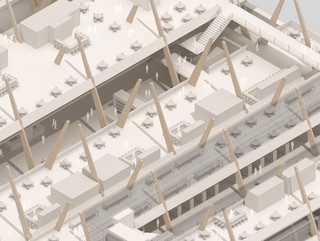
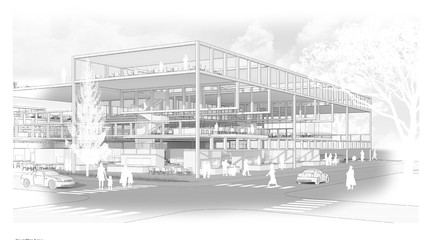

- Martha Kriley
- Noam Taylor
- Philip Li
- Katie Gancedo
IDEAS Entertainment Studio with Natasha Sandmeier and Nathan Su
M.Arch.II
The IDEAS Entertainment studio situates itself within the worlds and narratives that straddle the increasingly blurry line between fact and fiction – the Stranger Than Fiction reality that we all inhabit every day. We are architects who operate as designers, storytellers, filmmakers, gamers, vfx artists, and actors.
- Stranger than Fiction Spring 2020 Showreel
IDEAS Mobility Studio with Greg Lynn and Marta Nowak
M.Arch.II
New forms of mobility are being developed currently for both people and things. From autonomous container ships and trucks, to autonomous buses and cars, to autonomous aerial and land drones, logistics and transportation is being reformulated rapidly. These new forms of intelligent motion are impacting urban, suburban and rural infrastructure. However, little thought is being applied to how buildings are impacted; in particular, the interior circulation and building envelope. It is the premise of this studio that lightweight intelligent electric mobility should enter architecture and provoke a similar transformation that the elevator and escalator provoked a century ago.
- Mobility Spectacles by Anatoli Georgiadou
IDEAS Technology Studio with Güvenç Özel and Benjamin Ennemoser
M.Arch.II
In the world of surveillance capitalism where extreme transparency is camouflage for manipulation and control, how do we comprehensively understand the impact of our digital actions? The Deep Urbanism: Technocritical Architectural Narratives for Human/Machine Society studio aims to demystify the inner workings of the algorithms that hold increasing influence over our decisions, emotions, and sense of self by turning them into forms of media that are comprehensible through our spatial perception. Through subverting their innate purpose, the studio will hack such computational systems of control and exploit them for their creative potential for architectural production.
- Battery City by Ali Hakami, Dipinti Kapoor, and Zhishan Liu
- E-Waste City by Weonwoo Choi, Onur Koyun, and Zhi Zhou
IDEAS Urban Strategy Studio with Jeffrey Inaba, Gillian Shaffer and David Jimenez Iniesta
M.Arch.II
This year’s IDEAS Urban Strategy Studio explored LA-ND – as in land ownership, land development, land planning, endangered land, land disasters, land scarcity, and land redevelopment – is the bottom-line story of Los Angeles as a city. From its settlement to its series of expansions and finally its densification, reimagining the land has been the vehicle for the city to grow.
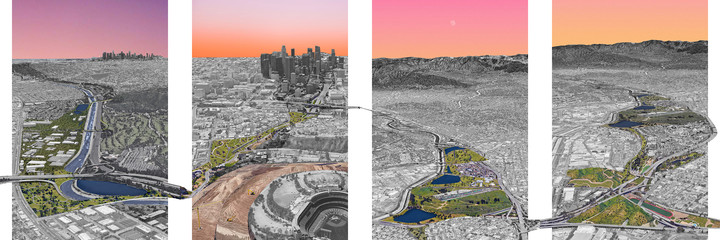
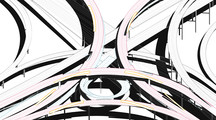
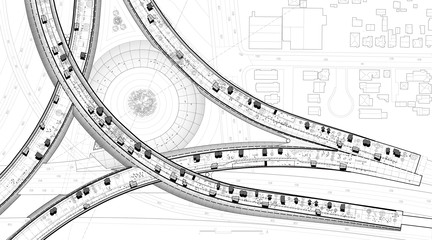
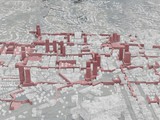
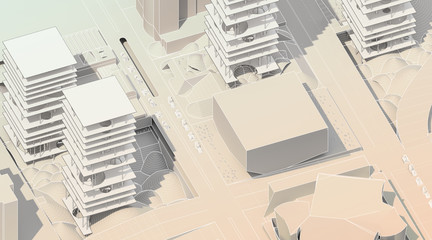



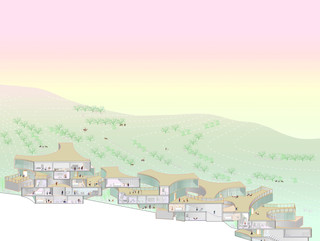
- Freeways by Aron Carcamo, Ruoyang Chen, Yeawon Min, and Lecan Li
- Freeways by Aron Carcamo, Ruoyang Chen, Yeawon Min, and Lecan Li
- Freeways by Aron Carcamo, Ruoyang Chen, Yeawon Min, and Lecan Li
- Third Mountain by Xinran Ge, Cin
- Shell and Earth Piles by Gaurav Puri, Ruchi Singhania, Yuxuan He, and Jingyi Wang
- Shell and Earth Piles by Gaurav Puri, Ruchi Singhania, Yuxuan He, and Jingyi Wang
- Shell and Earth Piles by Gaurav Puri, Ruchi Singhania, Yuxuan He, and Jingyi Wang
- Qi Long, Dingkai Xiang, Tong Wang, and Sihang Zeng
- Climate Risk by Wenhan Dong, Xiyan Wang, Lingyi Zhang
Major Building Design Studio with Georgina Huljich (Coordinator), Jimenez Lai, Narineh Mirzaeian and Mohamed Sharif
M.Arch.I, Second Year
A 60,000 GSF +/- Ferry Terminal in the reorganized waterfront landscape of the Channel Islands Harbor in Oxnard, California
Utilizing specific instructor-led disciplinary positions and formal, and representation techniques, each studio began the quarter by reconfiguring the structure and contents of the waterfront landscape of the harbor peninsula. With rising sea-levels in mind, the exercise addressed issues of infrastructure, district plan, and section organizations and programming (both fixed and temporal) through topics and binaries of edge, figure, ground, mass, landform, forces, flows, and functions. Following that, students developed proposals for a replacement of the existing Channel Islands cruise and charter terminal and its ancillary functions. The large-scale reformulation and small-scale design developments prioritize distinct forms over dated ideas of landscape urbanism and establish new systems of order over what is currently a hazy terrain of loosely connected episodes.
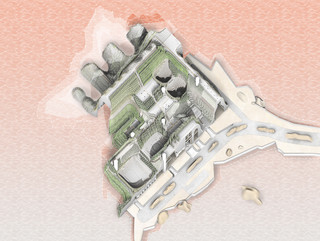
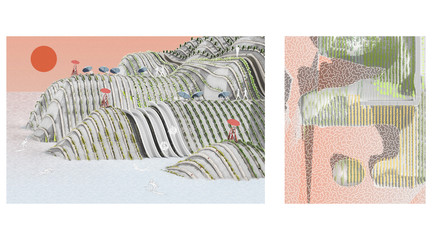
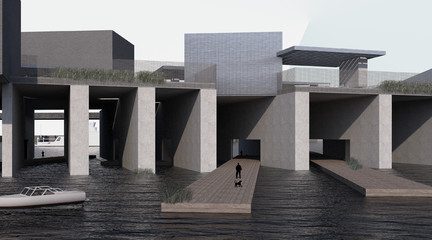



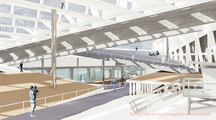
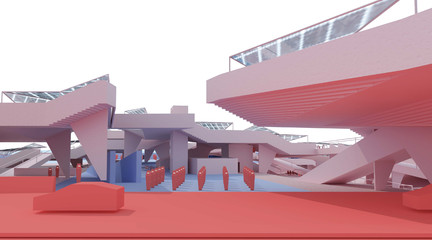
- Cullen Fu
- Cullen Fu
- Christina Rodriguez, Phoebe Webster
- Christina Rodriguez, Phoebe Webster
- Hannah Hortick, Samantha Radice
- Phillip Brown, Casey Knudsen
- Nate Waddell, Gabriel Strzepek
- Sonali Khanna, Tomasz
Tech Core with Katy Barkan (Coordinator), Benjamin Freyinger, Jake Matatyaou, and Jason Payne
M.Arch.I, First Year
Interrogating the limitations of the stack, this studio proposes to nest together a parking garage and a gym to dislodge the mute, repetitive, and indeterminate section and to instead develop complex spatial propositions that may (or may not) reveal themselves in elevation.
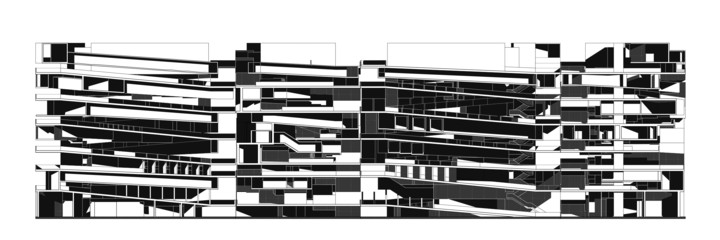

- Marina Archangeli
- Akana Jayewardene
Studio III with Ramiro Diaz-Granados
Undergraduate, Senior Year
This studio examines the relationship between architecture and the city through the development of a large singular urban artifact. Working from the inside out students will develop topological voids as distributed atria encased in a simple massing.
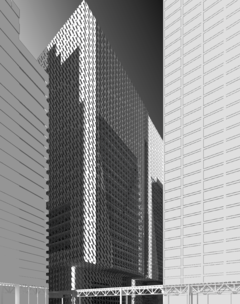
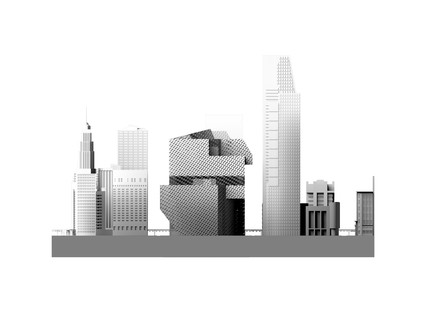
- Chiara Noppenberger
- Michika Watanabe
Technology III with Georgina Huljich
Undergraduate, Junior Year
This studio will debate on the correlation between domestic and public facts and their corresponding images during the COVID-19 era, and the influence that these exert upon the reception of architecture from broader audiences. By obsessively surveying spaces, not just physically and materially, but experientially, emotionally and performative, and appropriating each and all of their coordinates through complex and innovative modes of architectural documentation and representation, we will aim to produce a series of divergent, albeit fictional narratives presented as architectural images.
- Media by Riley Hammond, Yujie Hu, Lauren Mendoza, and Paola Ovando
- Aames by Alden Kramer, Andrew Frastaci, Michael Stroud, and Eunice Han
Technology Seminar with Yara Feghali
M.Arch.I, M.Arch.II
My Living Room is Public is a twisted documentation of the spaces we inhabit. We are now isolated in our domesticity and will use that constraint as the starting point of the seminar working our way from realism towards abstraction. We will collect photorealistic data from your domestic environments as as-built survey and work backwards to drawings, and then to design propositions by inputting them into a game.
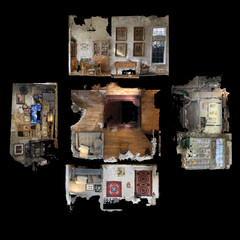
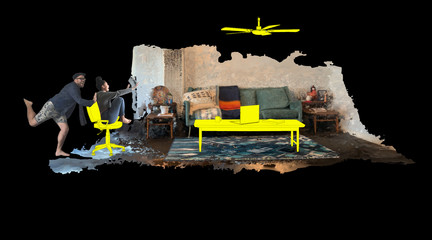
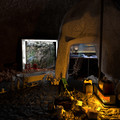
- Kristiana Burgi, Xavier Ramirez, and Hideyo Kameda
- Chloe Waton, Hiroshi Holloway, and Dara Hav
- Shuaijiang Chen, Sihang Zeng, and Jinfeng Wu
- Alekya Malladi, Chinmayi Suri, Gesthimani Roumpani, and Luis Garcia
- Alekya Malladi, Chinmayi Suri, Gesthimani Roumpani, and Luis Garcia
- Alekya Malladi, Chinmayi Suri, Gesthimani Roumpani, and Luis Garcia
- Alekya Malladi, Chinmayi Suri, Gesthimani Roumpani, and Luis Garcia
- Irem Uygur, Sangmi Lee, and Akash Ragde
Technology Seminar with David Jimenez Iniesta
M.Arch.I, M.Arch.II
Photogrammetry generates detailed 3D models from photographs and is transforming industries like cartography, archeology, and VFX. In Students will explore the theoretical and practical dimensions of photogrammetry with emphasis on applications in architecture. Ultimately, students will design and fabricate devices to collect images, process photoreal models, and produce complex virtual environments.
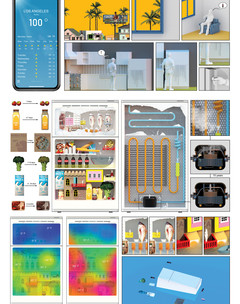
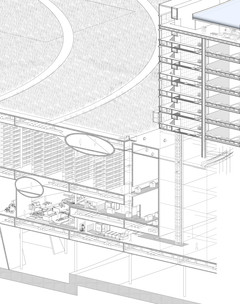
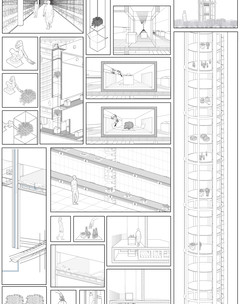
- Yu Han, Ada Luchao Wang, and Yifan Zhang
- Yu Han
- Qi Long and Dingkai Xiang
- Anatoli Georgiadou, Yeawon Min, Nan-Tse Su, and Weonwoo Choi
- Pin Board - Combined Seminar Work
- Qi Long and Dingkai Xiang
Technology Seminar with Ben Refuerzo
M.Arch.I, M.Arch.II
ART/CHAIR is often taken for granted and the design of everyday items is regularly manifested in the mundane. Too often the utilitarian is relegated to function and not associated with design and is therefore considered to be lacking in aspects of critical/conceptual thinking...nothing should be further from the truth. Design should be elevated to art through the use of materials, details and form to make the simple sublime...DESIGN, ANIMATE, MAKE A CHAIR.
Technology Seminar with Garrett Ricciardi
M.Arch.I, M.Arch.II
The Architectural Patent Office (APO) explores the novel, technological, and intellectual property applications of architectural patents. Assuming a fundamentally different relationship to technology – the group abandons conventional tools, software, and building techniques in favor of an architecture made possible by one-of-a-kind inventions, scratch built technologies, or construction equipment designed ground-up.
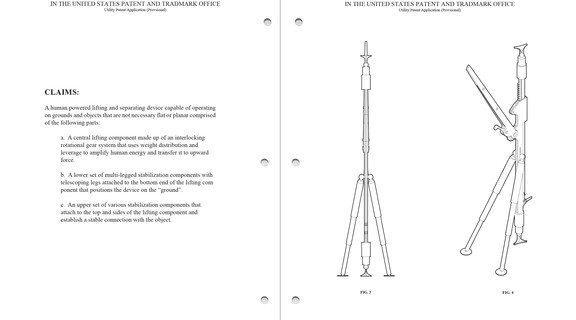
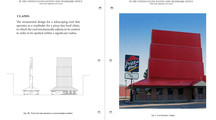
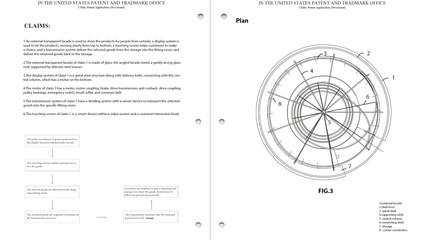
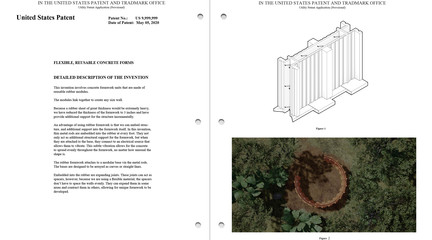

- Xavier Ramirez and Hannah Hortick
- Georgia Pogas and Michael DePrez
- YiYin Wu and Xiran Wang
- Zhishan Liu and Sana Jahani
- Morgan Jacobs and Yuexuan Zhang
- Combined Seminar Work
Technology Seminar with Daniel Segraves
M.Arch.I, M.Arch.II
This course will explore the ever-expanding domain of computational design by starting with the basics of parametric modeling and building up to true algorithmic processes of design generation and optimization. The visual scripting platform, Grasshopper, will serve as the foundation for experimentation.
Technology Seminar with Julia Koerner
M.Arch.I
This seminar introduces construction systems and techniques with a focus on digital fabrication and advanced material studies. The course elaborates on contemporary methods of design, digital fabrication and assembly associated to professional practice and research in architecture through lectures, case studies and invited international industry specialists. This course requires the students to conduct research studies on new and innovative construction principles and explore the use of new materials. It also exposes students to new assembly methods such as pre-fabrication, robotic fabrication and additive manufacturing in construction.
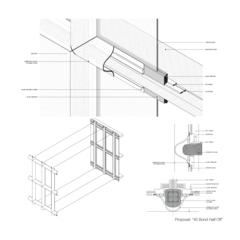
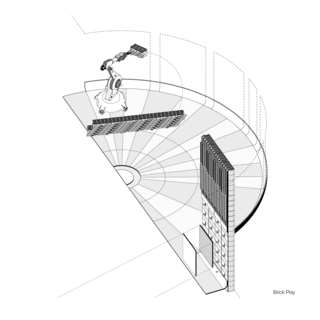
- Phoebe Webster, Hannah Hortick, Philip Brown
- Christina Rodriguez, Samantha Radice, Shabnam Abtahi